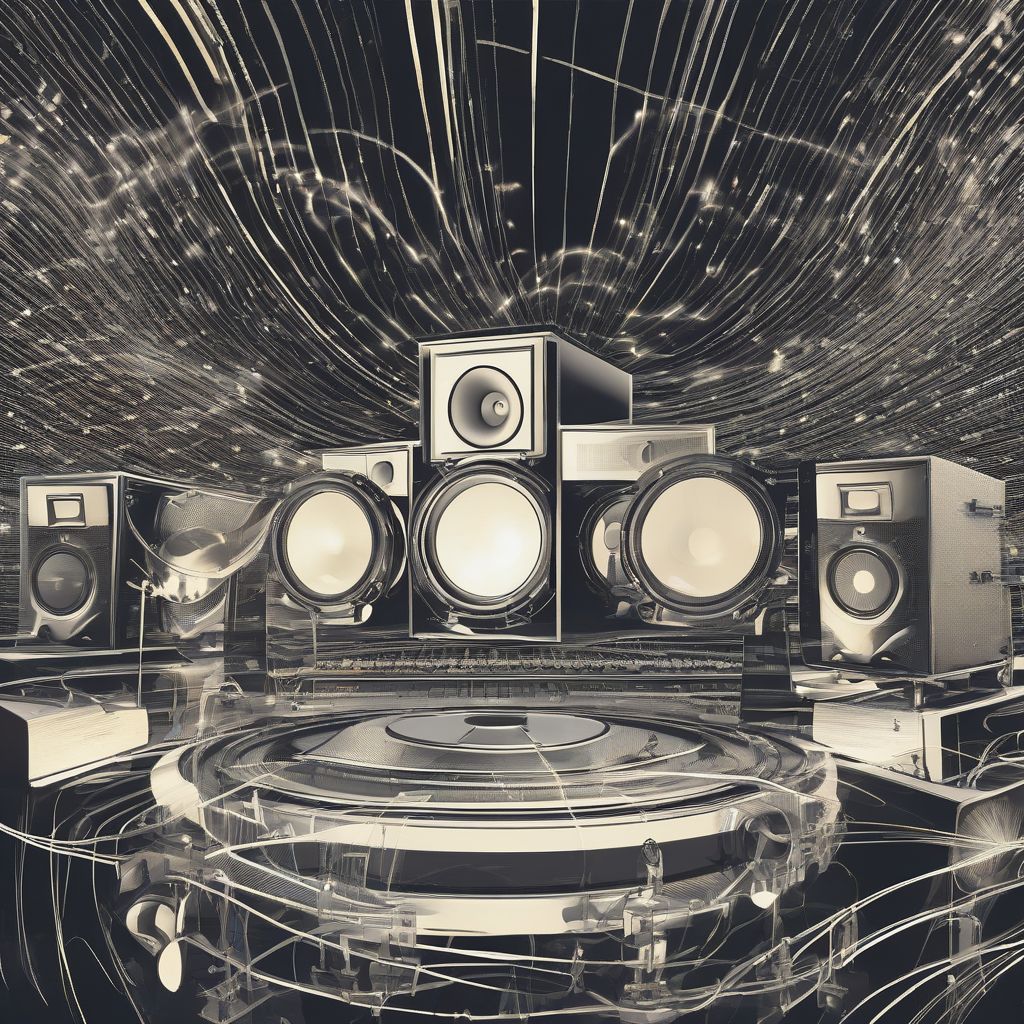Imagine listening to your favorite band on a pair of headphones. You can hear the distinct placement of each instrument; the drums feel powerful and centered, the guitar riffs soar from the left, and the vocals resonate clearly in the middle. This immersive sonic experience, my friend, is the magic of stereo imaging.
What is Stereo Imaging?
In simple terms, stereo imaging refers to the placement of sound sources within a stereo field, creating the illusion of width, depth, and space. It’s like painting a sonic picture on a canvas that extends beyond your speakers, enveloping you in a rich tapestry of sound.
Why is Stereo Imaging Important?
Imagine listening to a song where all the instruments are clumped together in the center. It would sound flat, muddy, and lifeless, right? Now, picture that same song with instruments strategically placed across the stereo field. Suddenly, the mix comes alive!
Here’s why stereo imaging is crucial:
- Clarity and Separation: It allows each instrument to occupy its own space, preventing them from masking or clashing with each other. This separation makes the mix cleaner, punchier, and easier on the ears.
- Immersive Experience: Just like a good movie draws you in with stunning visuals, a well-imaged mix immerses you in the music, making you feel like you’re right there in the recording studio or concert hall.
- Emotional Impact: By strategically placing instruments and vocals within the stereo field, you can evoke specific emotions and enhance the overall impact of the music. For example, a lead vocal placed front and center commands attention, while a reverb-drenched guitar panned to the side can create a sense of spaciousness and wonder.
 Stereo Imaging
Stereo Imaging
How to Achieve Great Stereo Imaging
So, how do you, as a music creator or audio enthusiast, achieve this magical stereo imaging? Here are some tried and true techniques:
1. Panning
Panning is like directing traffic in your mix, allowing you to position instruments left, right, or center within the stereo field. It’s the most fundamental tool for creating width and separation.
- Hard Panning: Placing instruments entirely to the left or right can create a wide and dramatic stereo image.
- Subtle Panning: Slightly shifting instruments off-center can add subtle width and dimension without sounding too drastic.
Pro Tip: Avoid panning bass frequencies too wide as it can lead to phase cancellation issues, especially on smaller speakers.
2. EQ and Filtering
Equalization (EQ) and filtering are like sonic sculptors, shaping the frequency content of individual tracks to prevent masking and create space.
- High-Pass Filtering: Removing unnecessary low frequencies from instruments that don’t require them (guitars, vocals, cymbals) can create a cleaner and more defined low-end.
- Strategic EQ: Subtle boosts and cuts in specific frequency ranges can help carve out space for different instruments and improve their clarity.
3. Reverb and Delay
Reverb and delay are spatial effects that add depth, dimension, and a sense of space to your mix.
- Reverb: Use different reverb types and settings to place instruments in different virtual spaces, creating a sense of depth and ambience.
- Delay: Experiment with stereo delay effects to create a wider and more spacious soundstage.
4. Mid-Side Processing
Mid-side (M/S) processing is a powerful technique that allows you to process the center (mid) and sides (stereo information) of your mix separately.
- Width Control: Increase the width of your mix by boosting the side signal or create a narrower sound by attenuating it.
- Depth and Dimension: Use EQ, compression, or saturation on the mid or side channels to enhance depth, clarity, and separation.
5. Ear Training and Experimentation
Remember, achieving great stereo imaging is both a science and an art. Train your ears to identify subtle differences in width, depth, and placement. Don’t be afraid to experiment with different techniques and trust your instincts.
Conclusion
Stereo imaging is the secret sauce that transforms a good mix into an immersive and unforgettable sonic experience. By understanding the principles and techniques discussed above, you can create mixes that transport your listeners to another dimension. So, dive in, experiment, and let your creativity flow! Your ears (and your listeners) will thank you for it.
Now, tell me, what are some of your favorite techniques for creating a wide and immersive mix? Share your thoughts in the comments below! And while you’re at it, check out this article on achieving professional-sounding mixes.
[amazon bestseller=”headphones for music production”]
